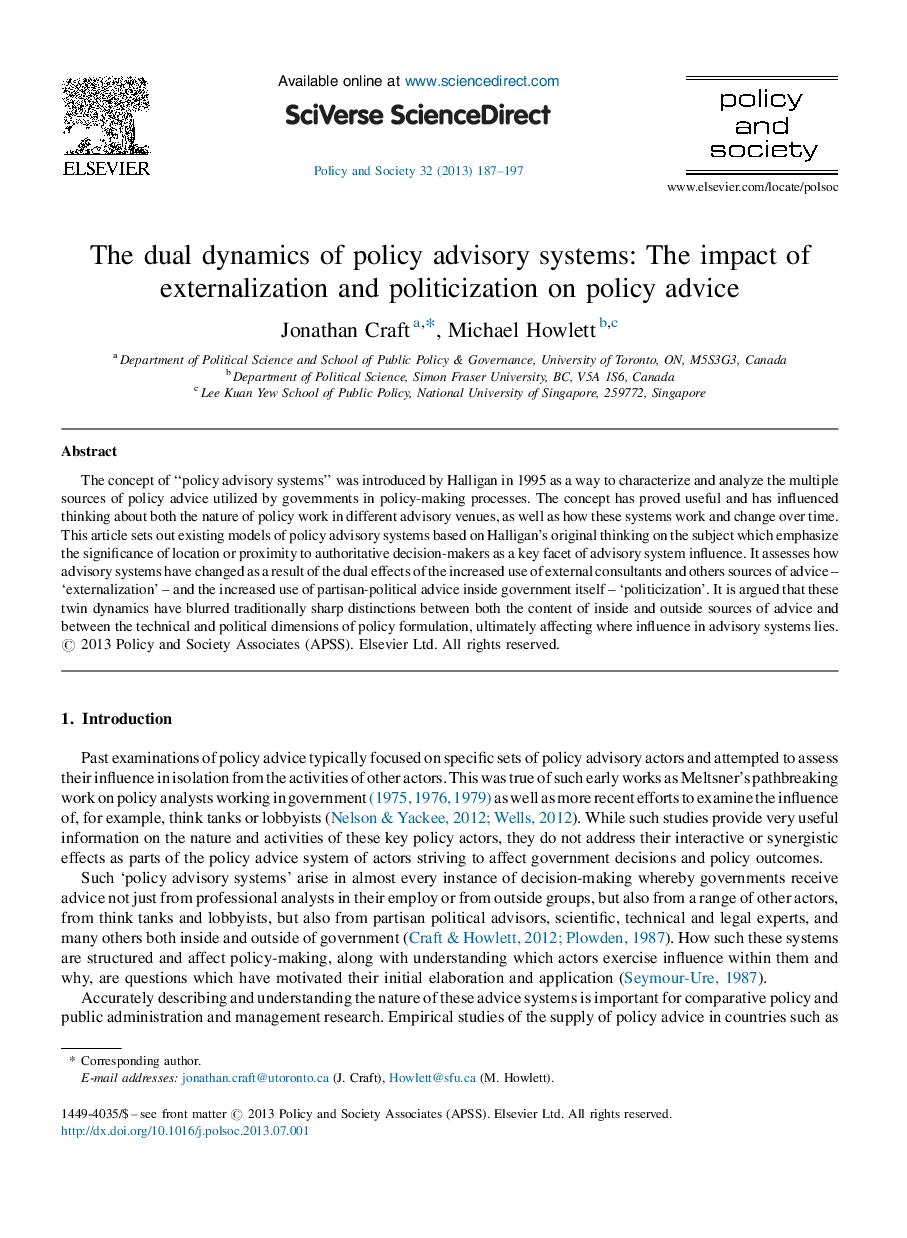| Article ID | Journal | Published Year | Pages | File Type |
|---|---|---|---|---|
| 1061547 | Policy and Society | 2013 | 11 Pages |
The concept of “policy advisory systems” was introduced by Halligan in 1995 as a way to characterize and analyze the multiple sources of policy advice utilized by governments in policy-making processes. The concept has proved useful and has influenced thinking about both the nature of policy work in different advisory venues, as well as how these systems work and change over time. This article sets out existing models of policy advisory systems based on Halligan's original thinking on the subject which emphasize the significance of location or proximity to authoritative decision-makers as a key facet of advisory system influence. It assesses how advisory systems have changed as a result of the dual effects of the increased use of external consultants and others sources of advice – ‘externalization’ – and the increased use of partisan-political advice inside government itself – ‘politicization’. It is argued that these twin dynamics have blurred traditionally sharp distinctions between both the content of inside and outside sources of advice and between the technical and political dimensions of policy formulation, ultimately affecting where influence in advisory systems lies.
